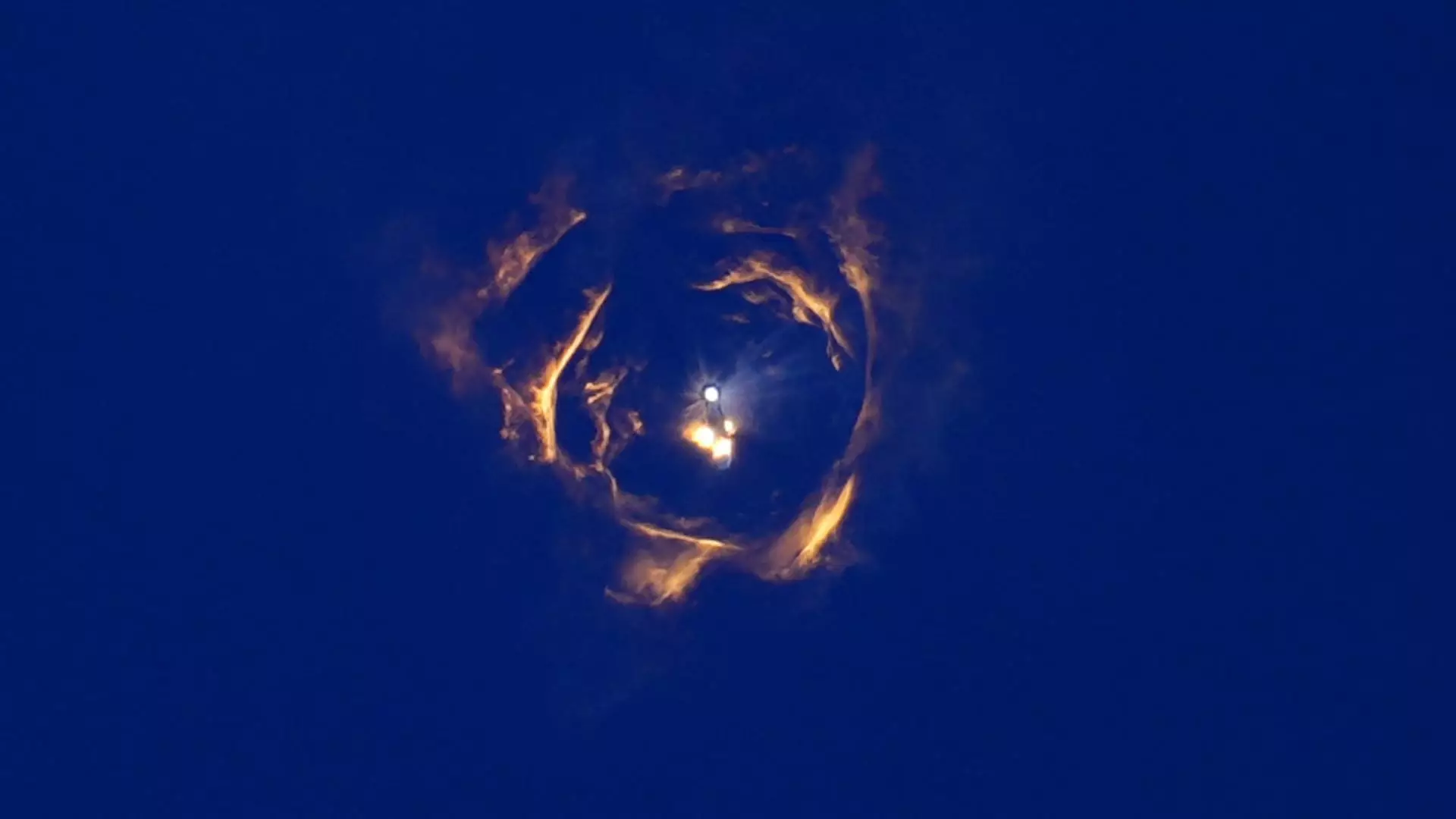On a seemingly routine Thursday evening, the aerospace world was jolted when SpaceX’s Starship rocket experienced a catastrophic breakup during its seventh flight test. This incident not only attracted the attention of space enthusiasts but also had significant implications for commercial air travel. Flight-tracking data revealed that a multitude of flights were either delayed or diverted due to the falling debris, leading to a ripple effect that ensnared various airlines operating in the vicinity.
In light of the unexpected event, the Federal Aviation Administration (FAA) acted promptly to mitigate potential dangers in the affected airspace. The agency issued alerts to pilots regarding a “dangerous area” aligned with the trajectory of the Starship rocket’s debris. Flight-tracking services such as Flightradar24 and FlightAware documented numerous alterations to flight paths and cancellations, as airlines scrambled to ensure the safety of their passengers.
A JetBlue Airways flight, initially en route from Fort Lauderdale to San Juan, Puerto Rico, found itself diverted back to its origin nearly two hours into its journey. This was just one instance among many; reports emerged of a FedEx cargo jet and a Spirit Airlines flight adjusting their routes dramatically to avoid the incident’s fallout. Such unprecedented alterations highlight the delicate balance of air traffic management, especially in busy regions like Florida.
The FAA, while confirming that there were no reports of injuries or damage due to the debris, emphasized its commitment to public safety. The effective diversion of aircraft and the timely communication issued to pilots reflect the robust safety protocols in place. However, the incident raises pertinent questions about the preparedness and resilience of commercial air operations concerning ongoing space missions. The integration of aerospace endeavors with existing air traffic requires a seamless approach that guarantees the security of all flights in congested airspace.
The impacts of this disruption extended beyond immediate flight safety; they also showcased the interdependencies within the aviation industry. An American Airlines spokesperson mentioned that fewer than ten flights were diverted, yet each incident can lead to cascading effects on scheduling and passenger logistics. The cooperation and communication between commercial airlines and space agencies need to be more effective to ensure smoother operations during such high-stakes test attempts.
As the boundaries between commercial aviation and burgeoning aerospace industries blur, the stakes will undoubtedly continue to rise. This incident serves as a reminder of the challenges both sectors face in maintaining the integrity of operations while pushing the envelope of technological advancements.
SpaceX’s latest flight test serves as a critical learning opportunity for all stakeholders involved. As the industry strives towards innovation, the necessity for enhanced coordination between space launches and commercial aviation becomes increasingly paramount. This incident lays bare the need for a collaborative approach to modern air traffic management, ensuring that both realms can coexist safely and effectively in the skies. The future undoubtedly holds other challenges, but the lessons learned here can be instrumental in shaping a more secure and harmonious aerial environment.


Leave a Reply